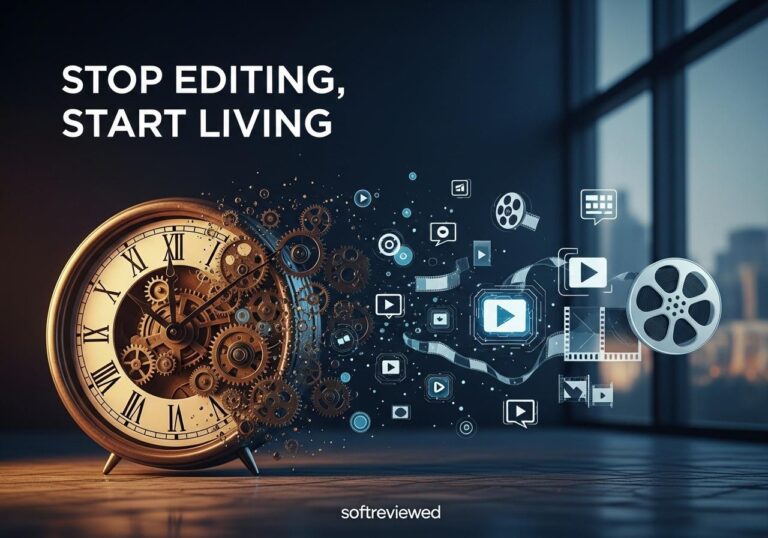Advanced AI Video Generation Features
Next-generation capabilities transforming video creation with AI technology
Object Insertion & Removal
Automatically add objects with perfect lighting and shadow integration that blends seamlessly with the scene. Object removal functionality coming soon for complete editing flexibility and natural-looking results.
Perfect Audio Synchronization
Experience automatic lip-sync technology, professional voiceovers, and adaptive sound effects that align perfectly with visual elements. All audio components are integrated into a single cohesive output for streamlined production.
Smart Scene Control
Generate complete videos from just first and last frames, extend existing clips without disruption, and maintain consistent character appearance and behavior across multiple scenes for narrative continuity.
Cinematic Quality with Realism
Enjoy enhanced textures, anatomically correct motion physics, and deeper storytelling understanding that produces true-to-life videos. Advanced rendering creates visuals that approach professional production quality.
Time-Saving Efficiency
Experience faster generation times than competitors with minimum processing requirements while maintaining high resolution output from 480p up to full 1080p quality, optimizing both speed and visual fidelity.
Flexible Format Support
Create content in both horizontal (16×9) and vertical (9×16) formats with extended 10-second clip capability, making it perfect for everything from traditional video content to social media stories and posts.
What Google Just Released Will Change How You Think About Video Creation
Google DeepMind dropped something big on October 15, 2025. It’s called Veo 3.1, and it’s not just another update to their video AI. This new model can create realistic videos complete with synchronized sound, all from simple text descriptions or images you provide. Think of it as having an entire film crew, sound designer, and video editor rolled into one AI tool.
If you’ve been watching the AI video space, you know this is getting serious. OpenAI has Sora 2, which creates impressive clips. But Veo 3.1 brings something different to the table: longer videos (up to 60 seconds), better character consistency, and native audio that actually matches what’s happening on screen. The best part? You can access it right now through Google’s Flow video editor, the Gemini app, or through developer APIs.
Let me walk you through everything this tool can do, how it stacks up against competitors, what it costs, and whether it’s actually worth your time in 2025.
Understanding the Technology Behind Veo 3.1
Veo 3.1 sits at the intersection of several AI breakthroughs. Google DeepMind built it using advanced transformer architectures and latent diffusion models—the same technology powering text-to-image generators, but adapted specifically for video with audio.
Here’s what makes it work: when you type a prompt like “a woman walking through a neon-lit Tokyo alley at night,” Veo 3.1 doesn’t just generate random frames. It understands physics, lighting, camera movement, and even how sound should behave in that environment. The model was trained on millions of hours of video content (likely including YouTube’s massive library), teaching it how real-world motion, textures, and audio work together.
The “3.1” version represents an incremental but meaningful upgrade over Veo 3, which launched in May 2025. While Veo 3 impressed users with 8-second clips at 720p, version 3.1 pushes boundaries with 1080p resolution, extended duration options, and significantly improved prompt adherence. Google reports that it generates “richer audio, more narrative control, and enhanced realism that captures true-to-life textures.”
What’s technically impressive is the joint audio-video training. Unlike competitors that generate video first and add sound separately, Veo 3.1 creates both simultaneously, ensuring lip-sync accuracy, ambient sounds, and sound effects that match the on-screen action perfectly.
The Journey from Veo 2 to Veo 3.1

Google didn’t start with Veo 3.1. This model represents the third major iteration in their video generation journey, with each version addressing limitations of its predecessor.
Veo 2 (2024) introduced basic text-to-video capabilities but struggled with consistency and produced only silent 5-8 second clips at 720p. Videos often had visual glitches—warped hands, inconsistent lighting, and characters whose appearance shifted between frames.
Veo 3 (May 2025) marked a breakthrough. For the first time, Google integrated native audio generation, allowing videos to include dialogue, ambient sounds, and music automatically. This version improved physics simulation and visual realism significantly. However, it was limited to 8-second clips in landscape format only, and users reported issues with the Flow interface forcing unwanted subtitles and inconsistent generation results.
Veo 3.1 (October 2025) arrived just five months later, addressing user feedback with:
📌 Extended duration: Now supports up to 60-second continuous videos (in some implementations), though standard generation remains at 8 seconds
📌 Resolution boost: Native 1080p output available, not just 720p
📌 Vertical format support: Full 9:16 aspect ratio for social media content (TikTok, Instagram Reels, YouTube Shorts)
📌 Character consistency: Maintains character appearance, clothing, and identity across multiple shots
📌 Improved prompt adherence: Better understanding of complex prompts with multiple elements
📌 Enhanced audio quality: Cleaner dialogue, more realistic sound effects, better ambient soundscapes
The naming might be confusing—Google also introduced “Veo 3.1 Fast,” a lighter, speedier variant that generates 720p videos more than twice as fast as standard Veo 3.1, optimized for quick iterations and testing.
Breaking Down Veo 3.1’s Core Features
Let’s get into what Veo 3.1 actually does, feature by feature.
Text-to-Video Generation
You describe what you want, and Veo 3.1 creates it. The model handles natural language prompts exceptionally well. You can write something like: “A 30-year-old scientist in a white lab coat examines a glowing blue substance in a dark laboratory, medium shot, cool blue lighting, ambient electronic hum in background” and get a coherent 8-second clip that matches your description.
The key is specificity. Vague prompts like “a person walks” produce generic results. Detailed prompts covering subject, action, setting, camera movement, lighting, and audio cues yield cinematic outputs.
Image-to-Video Transformation
Upload a still image, and Veo 3.1 brings it to life with natural motion. This works particularly well for:
👉 Animating product photos for advertisements
👉 Creating character animations from concept art
👉 Turning storyboard frames into moving sequences
The model understands depth, perspective, and natural movement patterns. If your image shows a person, Veo 3.1 adds realistic breathing, subtle head movements, or full-body actions based on your prompt. Lighting and shadows adjust naturally as subjects move.
Ingredients to Video
This is where Veo 3.1 gets interesting for professional work. You can upload multiple reference images—a character design, a location photo, an object—and Veo 3.1 combines them into a single cohesive scene. Think of it as a virtual set designer that assembles your assets according to your vision.
For example, upload an image of a medieval knight, a castle courtyard photo, and a sword design, then prompt: “The knight walks through the courtyard carrying the sword at sunset.” Veo 3.1 blends these elements together with appropriate lighting, scale, and physics.
Frames-to-Video
Provide a starting frame and ending frame, and Veo 3.1 generates the transition between them. This feature excels at creating smooth scene transitions and camera movements that would traditionally require complex keyframe animation.
Use cases include:
➡️ Creating establishing shots that move from wide to close-up
➡️ Building seamless scene transitions for narrative sequences
➡️ Generating camera fly-throughs and pans
Video Extension
Start with an 8-second clip, and Veo 3.1 can extend it by analyzing the final frames and continuing the action naturally. This allows creators to build longer sequences without obvious cuts or jumps. Google reports users have created videos exceeding one minute by chaining multiple extensions together.
Each extension bases its generation on the last second of the previous clip, maintaining visual continuity, character appearance, and environmental consistency.
SceneBuilder and Editing Controls
Flow, Google’s video editing platform powered by Veo 3.1, includes SceneBuilder—a timeline-based tool for assembling multiple clips into complete narratives. You can:
✅ Trim generated clips to exact timings
✅ Arrange scenes in sequence
✅ Add transitions between shots
✅ Insert or remove objects from existing scenes
✅ Adjust camera framing and composition
The object insertion feature lets you add elements to a scene retroactively. Add a lamp to a room, insert a character into an empty street, or place product items into lifestyle settings. Veo 3.1 handles lighting, shadows, and scale automatically to make additions look natural.
Object removal—rolling out soon—works similarly, allowing you to delete unwanted elements and let Veo 3.1 reconstruct the background seamlessly.
Native Audio Generation
This might be Veo 3.1’s killer feature. Every video includes synchronized audio by default:
🔊 Ambient soundscapes: Environmental sounds matching the location (city traffic, forest birds, ocean waves)
🔊 Sound effects: Object interactions, footsteps, door creaks, clothing rustles
🔊 Dialogue: Character speech with accurate lip-sync when specified in prompts
🔊 Music: Background scores appropriate to the mood and genre
You control audio through prompts. Writing “a woman whispers ‘help me’ urgently” generates not just the visual but the corresponding whispered audio with proper emotion and timing. Specifying “no subtitles” in your prompt prevents text overlays on dialogue.
Audio quality varies. Users report that while ambient sounds and effects are generally excellent, dialogue can sometimes sound slightly synthetic, especially for longer phrases. However, it’s significantly better than competitors who require separate audio generation steps.
Technical Specifications That Matter
Let’s talk numbers and capabilities.
Resolution Options
- 720p (1280×720): Standard for faster generation
- 1080p (1920×1080): Premium quality, available in both landscape and portrait
Aspect Ratios
- 16:9 (landscape): Traditional widescreen format
- 9:16 (portrait): Vertical format for social media
Frame Rate
- 24 fps: Standard cinematic frame rate across all models
Duration
- Standard generation: 4, 6, or 8 seconds
- With extensions: Up to 60+ seconds through chained generation
- Reference image mode: 8 seconds maximum
Input Modalities
- Text prompts (natural language)
- Single image input
- Multiple reference images (up to 3)
- Start and end frame pairs
- Existing video clips for extension
Language Support
Prompts accept English primarily, though users report success with other languages (Swedish, Spanish, French) when specified in prompts. Generated dialogue can be in multiple languages if explicitly requested.
Generation Time
- Veo 3.1 Standard: Approximately 30-60 seconds per 8-second clip
- Veo 3.1 Fast: 15-35 seconds per 8-second clip (more than 2x faster)
Output Formats
Videos export in standard MP4 format with H.264 encoding, compatible with all major platforms and editing software.
How Veo 3.1 Stacks Against the Competition
The AI video generation space is crowded in late 2025. Let’s compare Veo 3.1 to major alternatives.
Veo 3.1 vs. OpenAI Sora 2
Sora 2 is Veo 3.1’s most direct competitor. Both create realistic videos with audio, but they excel in different areas.
Realism and Physics: Sora 2 has the edge in micro-realism—skin textures, fabric movement, water physics. Its physics engine simulates realistic motion and object interaction slightly better than Veo 3.1 in complex scenes.
Duration: Veo 3.1 wins here. While Sora 2 typically generates 10-20 second clips maximum, Veo 3.1 supports longer sequences, especially with extensions.
Audio Quality: Veo 3.1’s native audio integration is superior. Sora 2 has improved audio-visual sync, but Veo 3.1’s joint training produces more cohesive soundscapes.
Accessibility: Veo 3.1 is available now through multiple platforms (Flow, Gemini app, APIs). Sora 2 has limited access through OpenAI’s app with longer waitlists.
Speed: Veo 3.1 Fast generates clips faster than Sora 2, though standard Veo 3.1 and Sora 2 have similar generation times.
Cost: Sora 2 charges per generation with tiered subscription pricing. Veo 3.1 API costs $0.75 per second ($6 for 8 seconds), while Flow access comes with Google AI Pro ($19.99/month) or Ultra plans ($249.99/month).
Veo 3.1 vs. Runway Gen-4
Runway ML pioneered AI video editing with practical tools for creators. Gen-4 is their latest model.
Style Preservation: Runway Gen-4 excels at maintaining artistic styles from input images. If you upload a watercolor painting and want it animated, Runway preserves that aesthetic better than Veo 3.1, which tends toward photorealism.
Speed and Iteration: Runway’s cloud-based architecture enables rapid iteration. Creators can generate and refine clips faster than Veo 3.1 Standard (though Veo 3.1 Fast narrows this gap).
Cinematic Quality: Veo 3.1 produces more “cinematic” outputs with better lighting, camera work, and scene composition. Runway Gen-4 sometimes feels more “digital.”
Audio: Runway lacks native audio generation. Users must add sound separately, giving Veo 3.1 a significant workflow advantage.
Use Case: Runway Gen-4 is ideal for quick social media content and artistic projects. Veo 3.1 suits longer-form storytelling and professional production where audio integration matters.
Veo 3.1 vs. Kling 2.1 Master
Kling, from Chinese company Kuaishou, gained popularity for its speed and image-to-video capabilities.
Image-to-Video: Kling 2.1 Master delivers exceptional image-to-video conversion with strong motion coherence. Users report better consistency when animating still images compared to Veo 3.1.
Speed: Kling 2.1 generates clips in approximately 3 minutes (Kling 2.1 Master takes 8-10 minutes). Veo 3.1 Fast matches the base Kling speed.
Camera Controls: Kling offers six preset camera movements (pan, tilt, roll, zoom, horizontal, vertical) with adjustable intensity through UI controls. Veo 3.1 handles camera movement through text prompts, offering more flexibility but less direct control.
Audio: Kling requires separate audio generation. Basic sound effects cost extra credits, and quality doesn’t match Veo 3.1’s integrated approach.
Cost: Kling 2.1 costs approximately $0.07 per second ($0.56 for 8 seconds). Kling 2.1 Master costs $0.21 per second ($1.68 for 8 seconds). Veo 3.1 API sits between these at $0.75 per second.
Veo 3.1 vs. Hailuo 2.0
Hailuo specializes in talking-head videos and virtual presenters with exceptional facial animation.
Facial Animation: Hailuo 2.0 dominates in expressive faces, emotion mapping, and lip-sync accuracy for dialogue-heavy content. If you’re creating AI avatars or corporate presenters, Hailuo is stronger.
Environmental Storytelling: Veo 3.1 excels at full scenes with camera movement, environmental details, and narrative context. Hailuo focuses narrowly on characters.
Integration: Some creators use both—generating faces with Hailuo and backgrounds with Veo 3.1, then compositing them for hybrid results.
Real-World Applications and Use Cases
Who’s actually using Veo 3.1, and what for?
Independent Filmmakers and Pre-Visualization
Filmmakers use Veo 3.1 to visualize scenes before expensive production. One independent filmmaker, Alex J., stated: “Veo 3.1 is revolutionary. I can pre-visualize entire sequences that would have taken weeks. The consistency of characters and environments is unlike anything I’ve seen.”
This pre-visualization workflow helps:
- Pitch concepts to investors with actual visual sequences
- Plan camera angles and shot composition
- Test narrative flow before committing to production
- Create animatics and storyboards with moving footage
Marketing and Advertising
Marketing teams generate video ads at scale without production costs. Brenda M., a marketing manager, reported: “Our video ad performance has skyrocketed since using this tool. We can create hyper-targeted, unique video content for every audience segment without blowing our budget.”
Use cases include:
- Product demo videos
- Social media advertisements
- Explainer videos
- Brand story content
- Concept testing before full production
Content Creators and Social Media
YouTube creators, TikTokers, and Instagram influencers use Veo 3.1 to generate B-roll, create unique intros/outros, or produce entirely AI-generated content channels. One creator reported: “The Veo 3.1 AI video generator is my secret weapon. It understands prompts for viral trends and helps my content stand out in a crowded feed.”
Business Communication
Companies create:
- Investor pitch videos with visualized product concepts
- Internal announcement videos for company-wide updates
- Product launch demos
- Training materials and onboarding content
- Report visualizations that turn data into visual stories
Education and Training
Educational institutions use Veo 3.1 to create:
- Historical reenactments for lessons
- Science visualizations (chemical reactions, physics concepts)
- Language learning scenarios with dialogue
- Safety training simulations
Rapid Prototyping
Product designers and UX teams visualize concepts before building. Veo 3.1 “shows what your world feels like before you even code it,” making it useful for team alignment, investor demos, or pre-production art direction.
Accessing Veo 3.1: Platforms and Pricing
You have several ways to use Veo 3.1, each with different pricing structures.
Google Flow (Consumer Access)
Flow is Google’s filmmaking tool specifically built around Veo 3.1. It includes SceneBuilder, asset management, and all Veo features in an intuitive interface.
Free Tier: 100 monthly credits at no cost
Google AI Pro Plan: $19.99/month ($0 first month promotional pricing)
- Veo 3.1 access
- Text-to-video, Frames-to-video, Ingredients-to-video
- Video extension
- Camera control
- SceneBuilder
- 1080p upscaling
- Top-up credits available for purchase
- Includes Gemini app with 2.5 Pro and Veo 3 Fast
- Gemini in Gmail, Docs, and Google Workspace
- 2 TB cloud storage
Google AI Ultra Plan: $249.99/month ($124.99 for first 3 months)
- Everything in Pro plan
- Highest monthly generation limits
- Veo 3.1 Fast generations for 0 credits (unlimited)
- No visible watermark on videos
- Priority generation speed
- Gemini app with 2.5 Pro Deep Think & Veo 3
- Project Mariner access (US only)
- YouTube Premium included
- 30 TB cloud storage
Gemini App (Mobile and Web)
Access Veo 3.1 directly through the Gemini chatbot interface. Describe what video you want in the chat, and Gemini generates it using Veo 3.1. This is the simplest entry point for casual users.
Available with Google AI Pro or Ultra subscriptions (same pricing as Flow).
Gemini API (Developer Access)
Developers can integrate Veo 3.1 into applications via the Gemini API.
Pricing: $0.40 per second of generated video with audio
- 8-second clip: $3.20
- 30-second clip: $12
- 60-second sequence: $24
This per-second pricing applies to actual output length. Veo 3.1 Fast is not separately priced but offers cost-efficiency through faster generation (reduced compute time on Google’s end).
Model IDs:
veo-3.1-generate-preview(standard quality)veo-3.1-fast-generate-preview(faster, same quality)
Vertex AI (Enterprise Access)
Google Cloud’s Vertex AI provides enterprise-grade access with:
- Custom quotas and rate limits
- Regional deployment options
- Integration with Google Cloud services
- SLA guarantees
- Advanced usage analytics
Pricing matches Gemini API rates ($0.15/second), but enterprise contracts may negotiate volume discounts.







